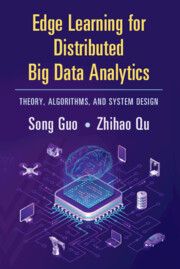Book contents
- Frontmatter
- Contents
- List of Figures
- List of Tables
- 1 Introduction
- 2 Preliminary
- 3 Fundamental Theory and Algorithms of Edge Learning
- 4 Communication-Efficient Edge Learning
- 5 Computation Acceleration
- 6 Efficient Training with Heterogeneous Data Distribution
- 7 Security and Privacy Issues in Edge Learning Systems
- 8 Edge Learning Architecture Design for System Scalability
- 9 Incentive Mechanisms in Edge Learning Systems
- 10 Edge Learning Applications
- Bibliography
- Index
2 - Preliminary
Published online by Cambridge University Press: 14 January 2022
- Frontmatter
- Contents
- List of Figures
- List of Tables
- 1 Introduction
- 2 Preliminary
- 3 Fundamental Theory and Algorithms of Edge Learning
- 4 Communication-Efficient Edge Learning
- 5 Computation Acceleration
- 6 Efficient Training with Heterogeneous Data Distribution
- 7 Security and Privacy Issues in Edge Learning Systems
- 8 Edge Learning Architecture Design for System Scalability
- 9 Incentive Mechanisms in Edge Learning Systems
- 10 Edge Learning Applications
- Bibliography
- Index
Summary
In a cloud-edge environment, data are generated by different types of devices, and these devices have various computation capabilities and storage sizes. It is unrealistic to execute all the tasks in the cloud, instead, putting some work into edge servers that are close to end-users would be more reasonable. Edge Learning is a powerful paradigm for big data analytics in the cloud-edge environment. Edge Learning exploits pervasive data generated not only by user devices but also by other sensing devices and those stored in the cloud/edge servers (e.g., data from social networks). Moreover, EL leverages various computing entities (all the devices with computing capabilities ranging from cloud, edge servers, to various edge devices) in an efficient, reliable, and robust manner.
In this chapter, we first introduce the deep learning models that are widely used in Edge Learning. Then, we introduce the basic machine learning algorithms, architectures, and synchronization mode for Edge Learning.
- Type
- Chapter
- Information
- Edge Learning for Distributed Big Data AnalyticsTheory, Algorithms, and System Design, pp. 11 - 23Publisher: Cambridge University PressPrint publication year: 2022

